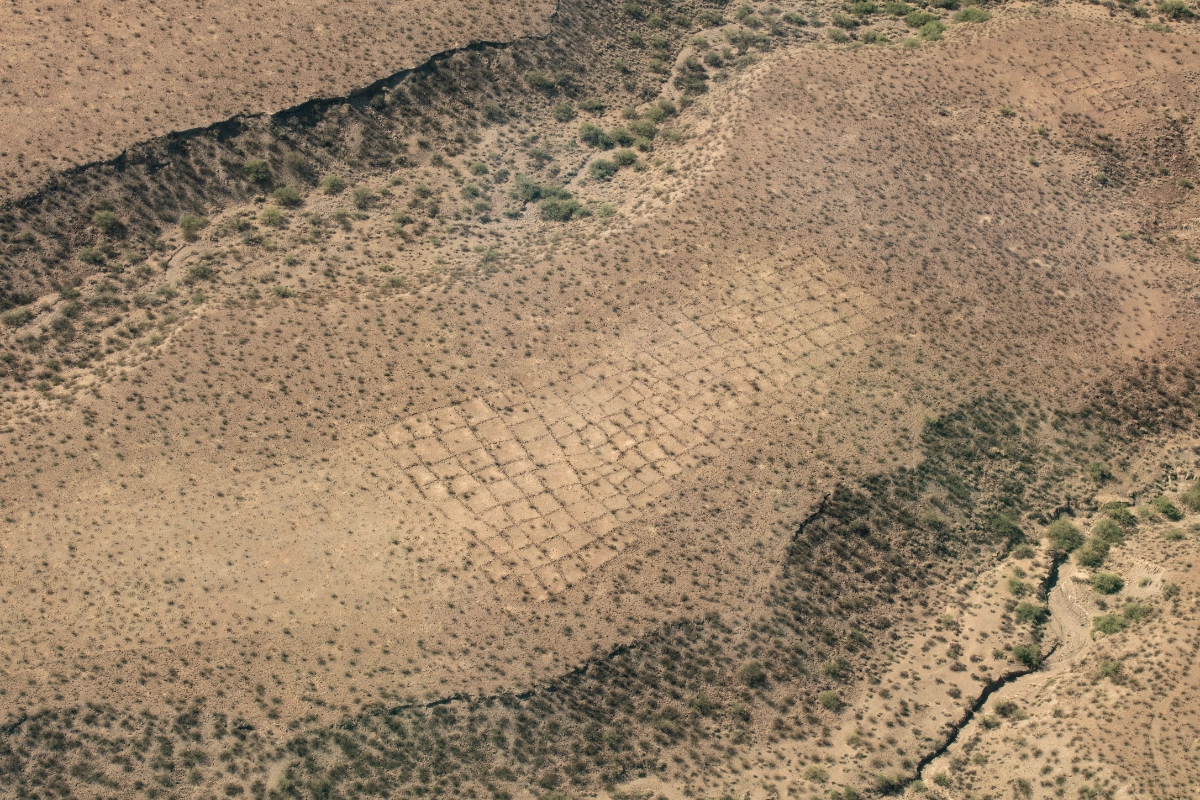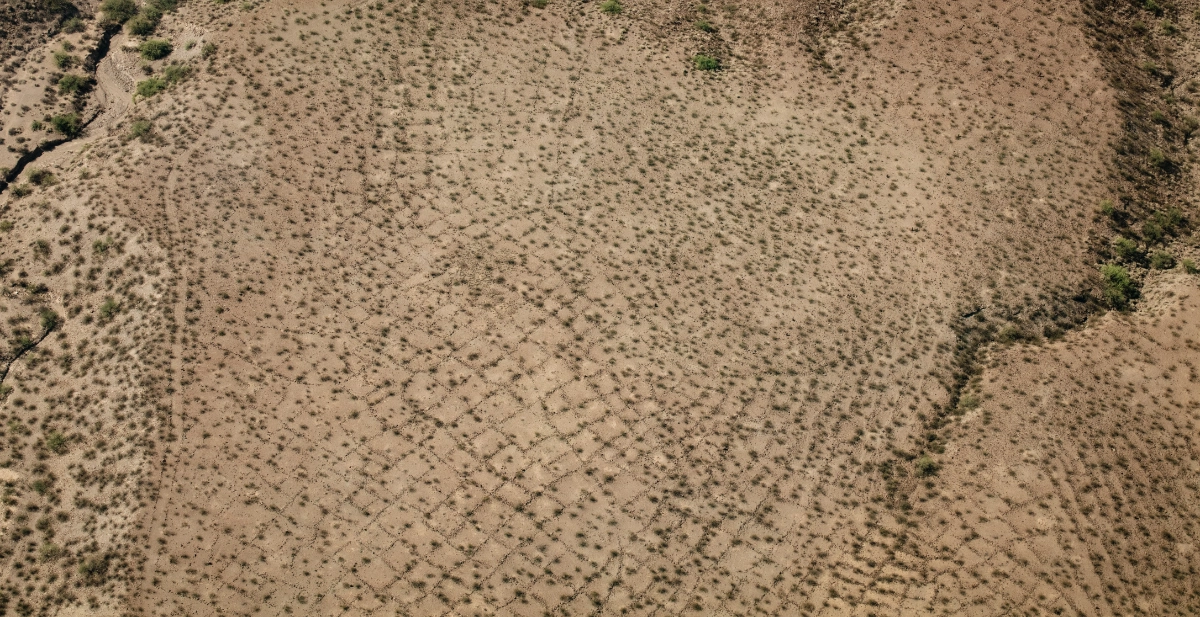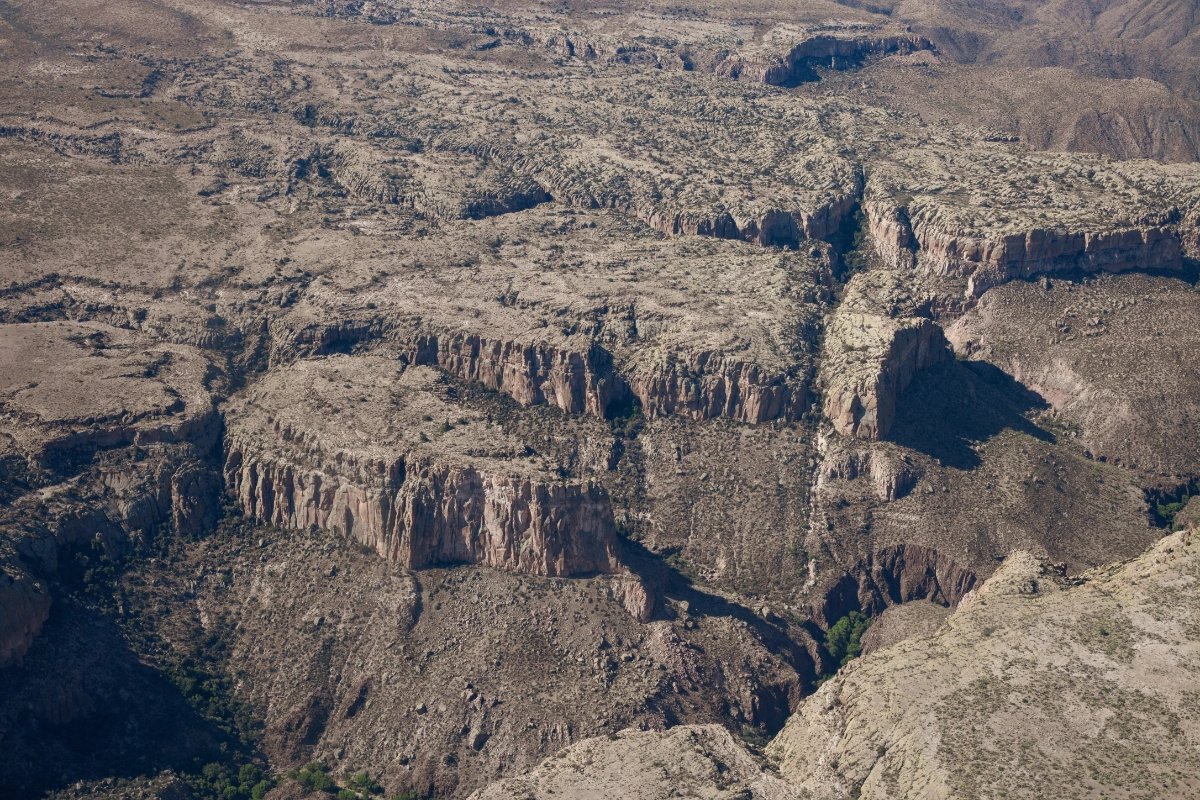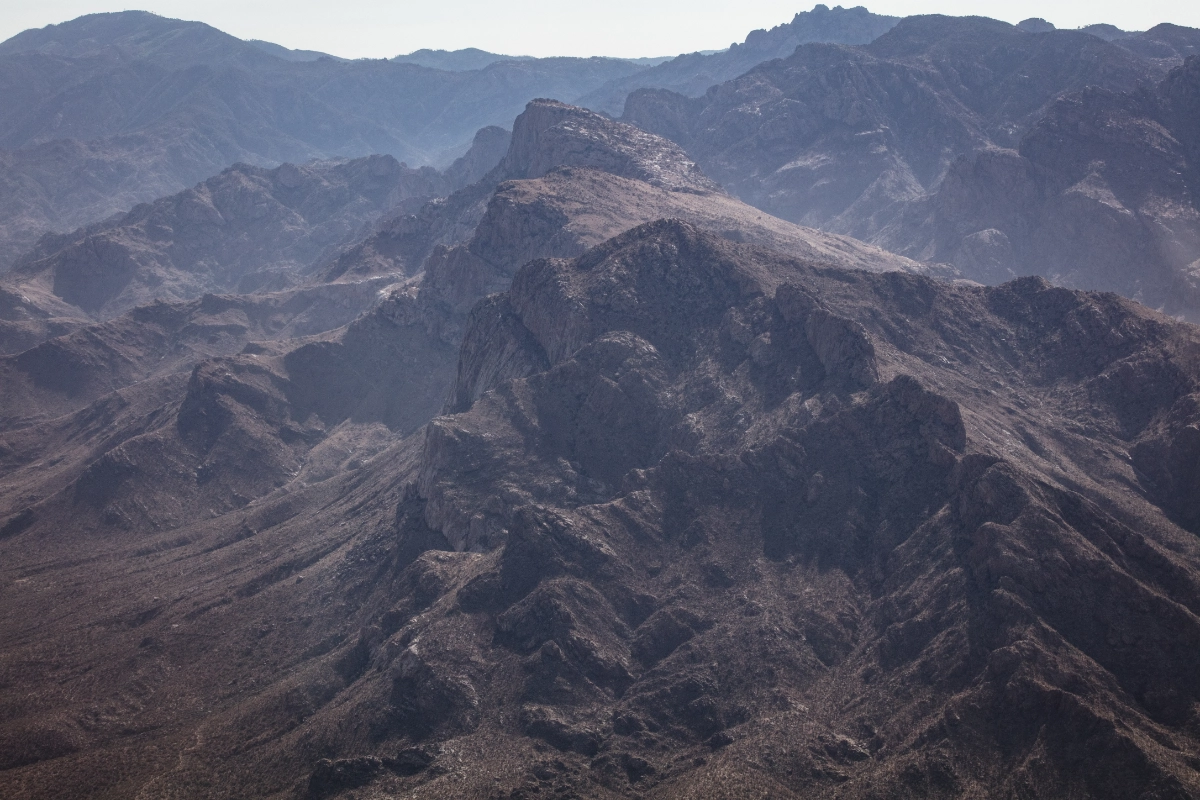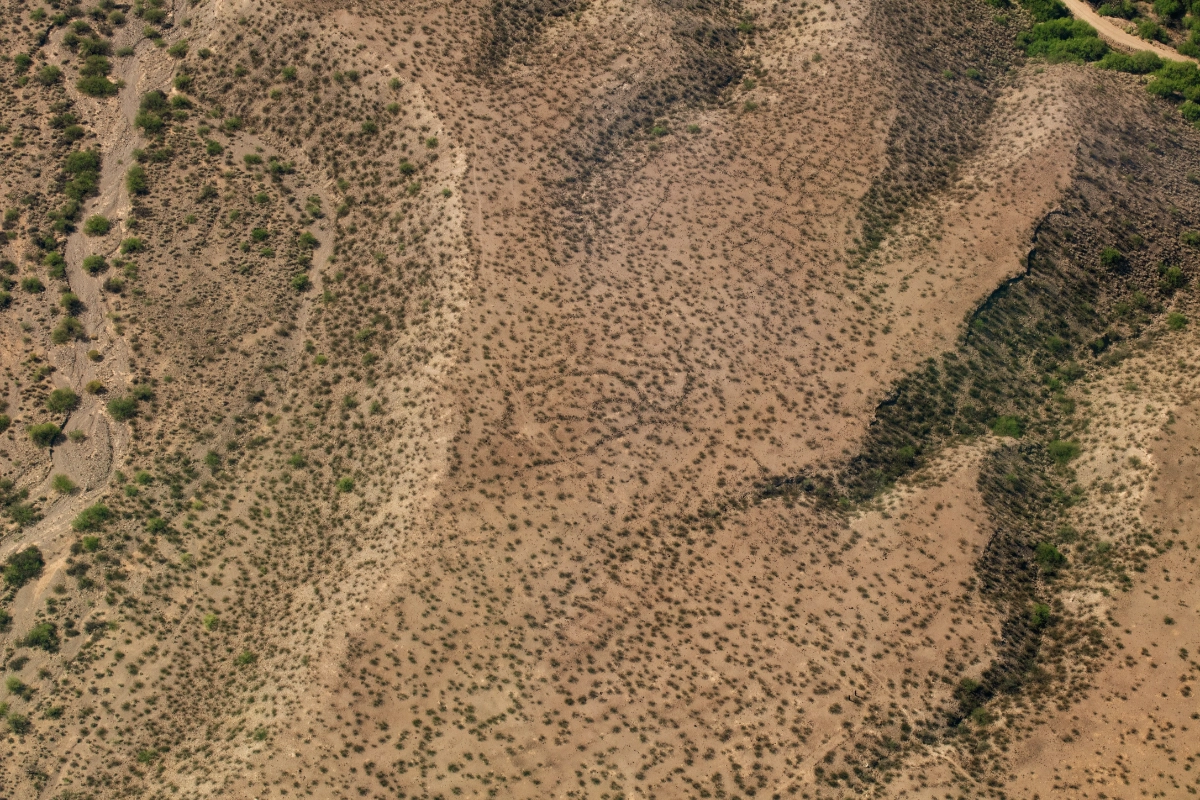Flying to Document Ancient Gardens in Arizona

Ancient gardens that date back 1,000 to 1,200 years are still visible from the air in the desert landscapes of Arizona. A LightHawk flight collected images of the waffle gardens for publication in an upcoming issue of Archeaology Southwest. Photo by Jonathan Bailey.
Along the Gila River in Arizona exist ancient gardens dating back 1,000 to 1,200 years. From the ground, you may never know the small dirt berms shaping the rolling terrain were once walls dividing sections of these gardens. But from the air, the bigger picture comes into view, you can clearly see the waffle-like patterns created by the region’s early inhabitants.
Longtime volunteer pilot, Will Worthington, provided the flight that allowed Archaeology Southwest partners to capture stunning imagery of the ancient garden formations. The photos will help illustrate an upcoming article about these remarkable archaeological formations.
Will volunteered for the flight despite some doubts. “The flight was an interesting one over an area that I’m quite familiar with in Arizona,” he said. “When I learned the purpose of the flight, I was questioning and a bit skeptical because I’ve flown over that part of Arizona many times and was completely unaware of the presence—the existence—of any archaeological features out there, right on the banks of the Gila River.”
The flight began early in the morning in Tucson, following an hour-long ferry flight from the Phoenix area where Will keeps his plane. Will shared that the early start was for two main reasons: first, to avoid the thermal turbulence created by the Arizona summer. “If you can complete the flight by 9 a.m.,” he noted, “you can avoid most of the turbulence, keeping passengers comfortable.” The second reason was to provide photographers with the lighting and shadows they preferred for capturing imagery.
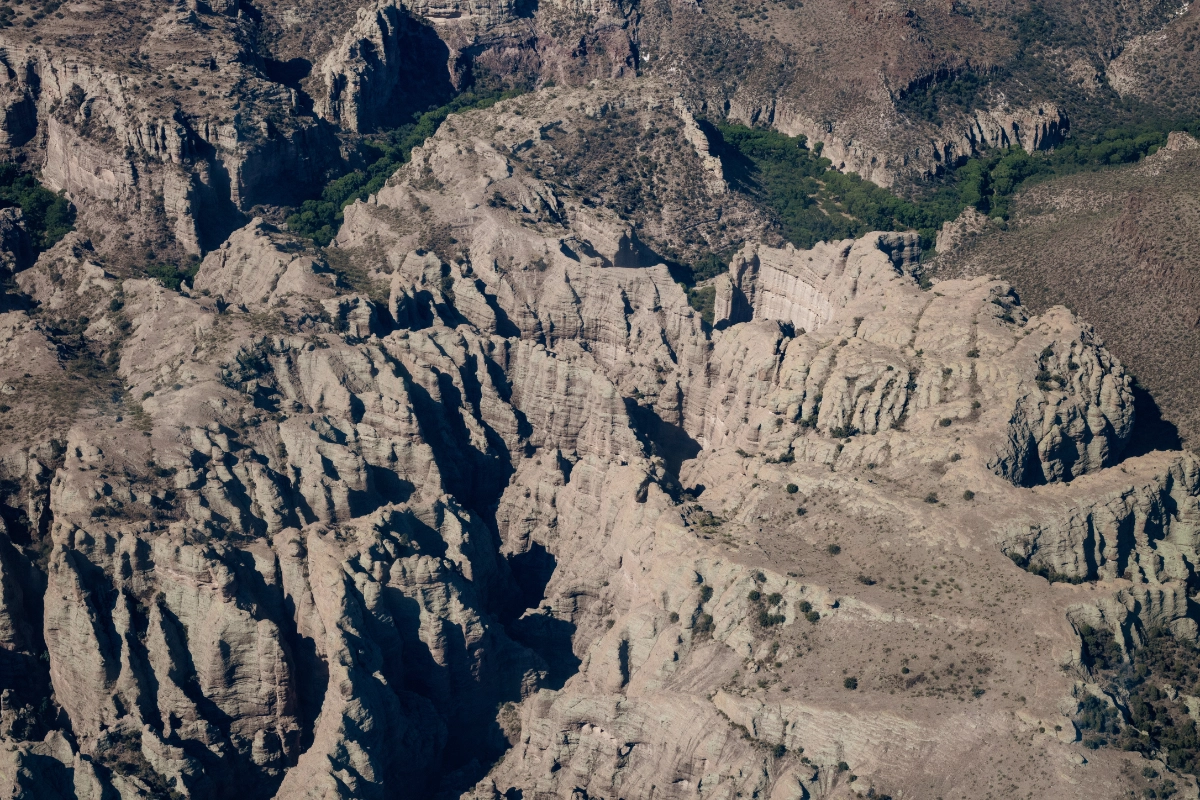
The terrain surrounding the gardens is rugged making the flying challenging. Photo by Jonathan Bailey.
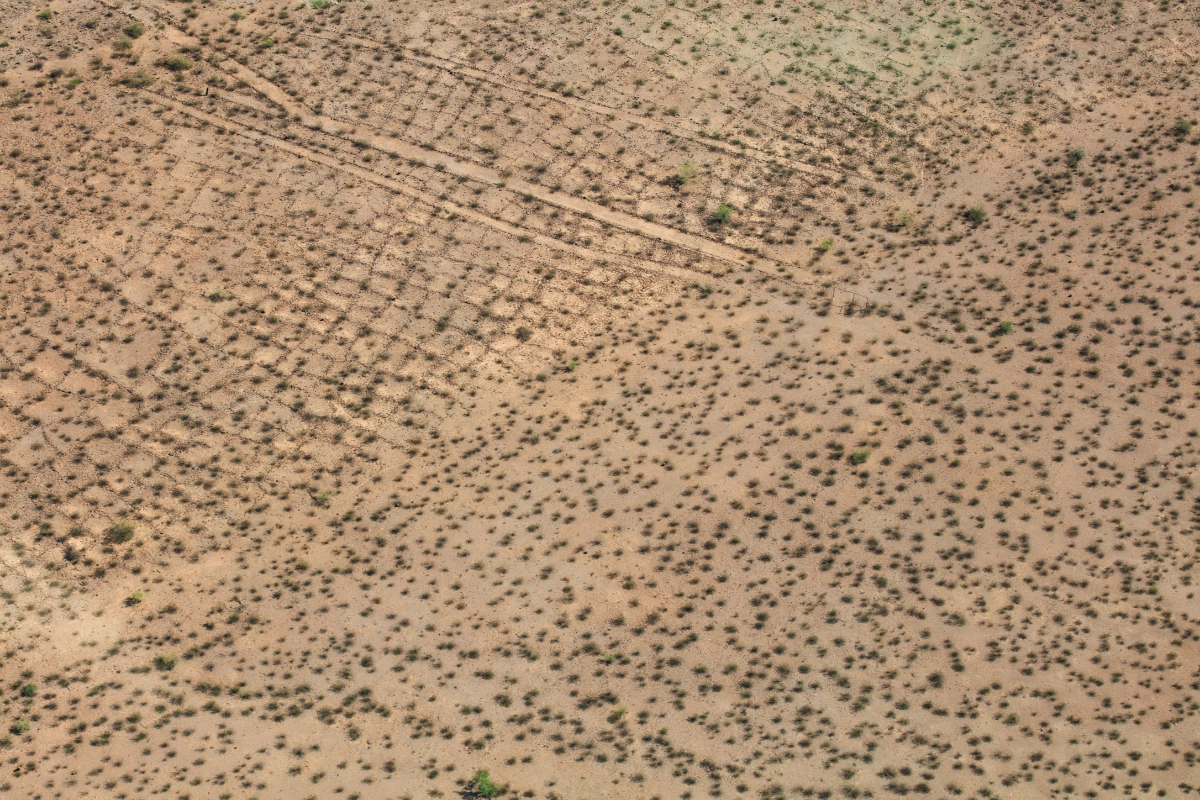
From the ground it would be easy to miss the gardens. From the air, the garden layout becomes readily apparent. Photo by Jonathan Bailey.
The partners had marked the areas of interest in Foreflight with tightly spaced waypoints. As the flight progressed, Will called out distance warnings—5 miles, 1 mile and arrival each waypoint. He was so focused on navigating the irregular flight path at relatively low altitude that he only had brief moments to glance at the ground being photographed below. Flying such a precise route left little time to take in the view himself.
The group flew up Aravaipa Canyon, beginning at the San Pedro River and heading east through rugged, mountainous terrain. They maintained an altitude of about 1,000 feet above ground level. Will noted that this kind of flying “requires you to draw on experience in mountainous areas.” To reach the Gila River Valley, they also had to cross a mountain ridge, which he said calls for a solid understanding of wind patterns and terrain hazards.
Flying at low altitude while following the requested flight path required Will to concentrate fully on the task of flying, rather than observing the ground below. He was able to catch parts of the conversation between passengers over the intercom, but he didn’t see the gardens himself during the flight.
Upon returning to the airport, Will asked the passengers if they felt the flight had been a success. They responded with enthusiasm, sharing how thrilled they were with the experience. Still, he remained a bit skeptical, having seen nothing particularly remarkable from his seat. But that skepticism quickly faded.
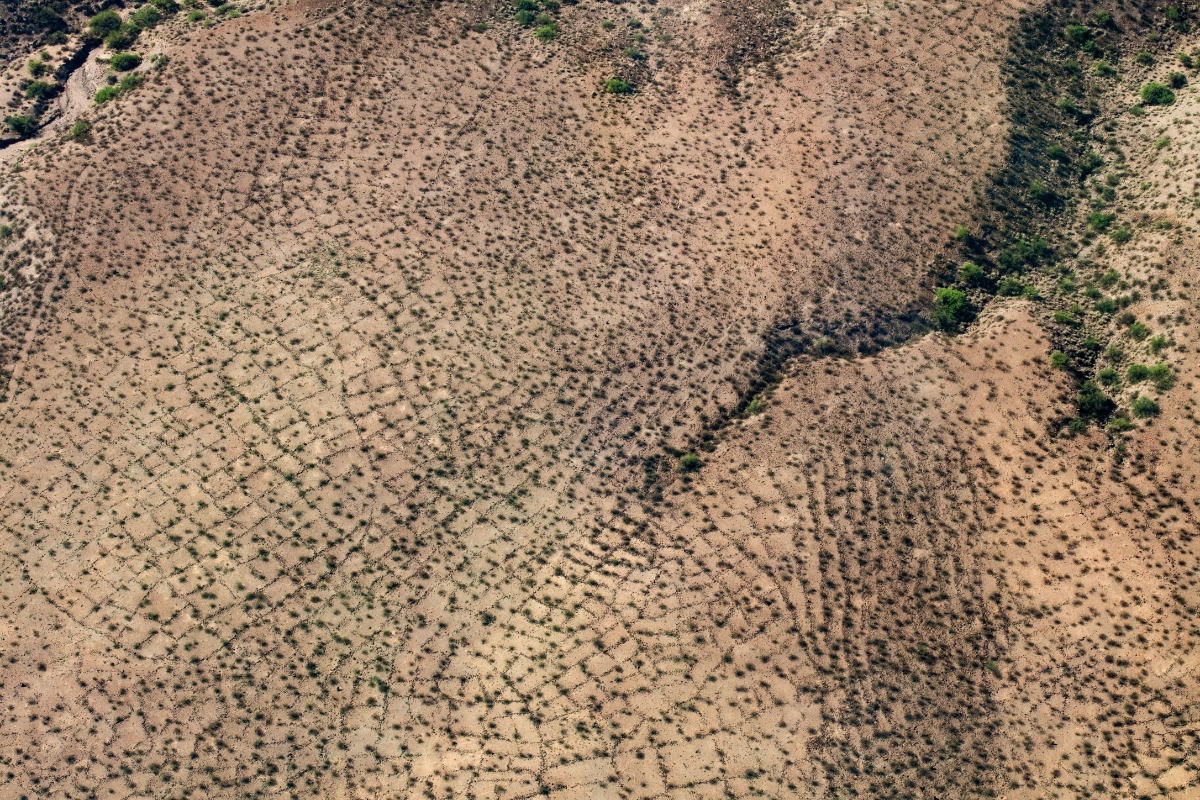
Images collected during this flight will help decision-makers preserve these ancient gardens as a monument to the ancient inhabitants of Arizona. Photo by Jonathan Bailey.
Later, the partners shared their images with Will and the LightHawk staff. When he saw them, he was struck by how vivid and dramatic the gardens appeared. “My impression is that from ground level, the little berms that make up the waffle are probably only a foot or so high,” he said. “It would be very easy to walk through them and not realize there is anything there. But when you see it from the air, it just jumps out at you.”
Will came away from the flight deeply satisfied, knowing he had helped the partners capture imagery for an important article soon to be published in an archaeological journal.
He also reflected on what keeps him flying for LightHawk after two decades of service: a passion for flying, a commitment to the environment, and a genuine appreciation for the people he meets along the way. “You get to work with some very interesting people on these flights,” Will said. “You don’t go flying for no reason at all. Sure, I could jump in my airplane today and just go bore some holes in the sky—but there’s not much satisfaction in that. You need a purpose. That’s what makes it worth the effort, the time, and the fuel.”
Will has been flying with LightHawk for 20 years and has generously donated hundreds of flights. He also serves on LightHawk’s Board of Directors and leads our Aviation Committee. We’re incredibly grateful for his unwavering commitment to conservation—and for the wisdom, skill, and heart he brings to every mission.
Additional images from the flight. Photos by Jonathan Bailey.

